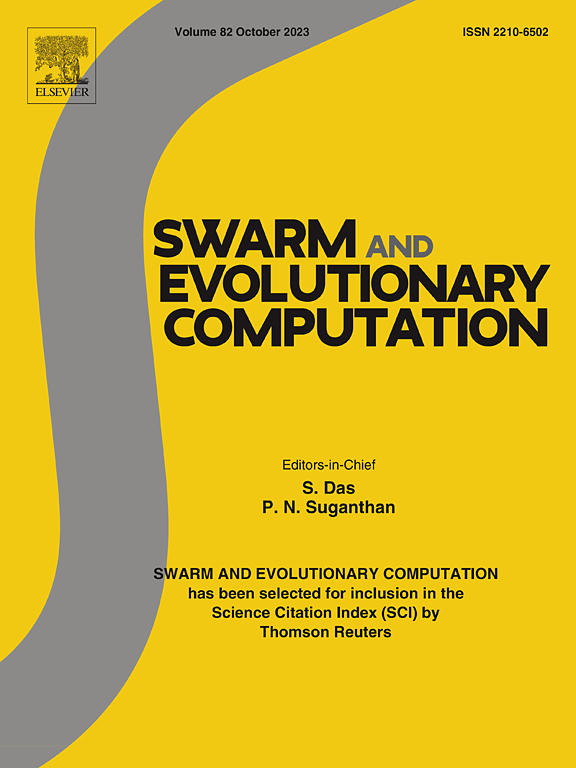Integrating evacuation and relief redistribution into last-mile relief network design: A two-stage distributionally robust optimization approach
IF 8.5
1区 计算机科学
Q1 COMPUTER SCIENCE, ARTIFICIAL INTELLIGENCE
引用次数: 0
Abstract
Last-mile relief networks (LMRNs) play a critical role in disaster response, as they directly connect relief supplies to affected populations and determine the timeliness and effectiveness of emergency operations. Consequently, an efficient and reliable LMRN is essential for post-disaster management, ensuring that evacuation and relief distribution processes are seamlessly integrated and effectively executed. However, current approaches often neglect the varying severity of disasters, which is essential for tailoring evacuation networks, shelter planning, and relief distribution to real-world post-disaster needs. This paper investigates the design of a last-mile relief network that jointly integrates emergency evacuation and relief redistribution in post-disaster scenarios. The objective is to provide effective evacuation plans for severely affected areas while ensuring equitable relief allocation, even in cases where distribution centers are damaged. To capture the dual uncertainties of disaster environments and varying severity levels, we propose a two-stage distributionally robust optimization (DRO) model, where distinct ambiguity sets describe uncertain parameters. In the first stage, we determine the locations of candidate distribution centers (CDCs), local distribution centers (LDCs), and shelters. In the second stage, we optimize the evacuation plan and the allocation of relief supplies in response to the realized post-disaster conditions. To address the computational complexity of the two-stage DRO, we derive a tractable robust counterpart based on partial probability information and design a tailored solution algorithm to efficiently obtain optimal strategies. The proposed approach is validated using a real-world case study of the Nepal earthquake, demonstrating improvements in evacuation efficiency and relief distribution reliability, while sensitivity analyses further yield practical insights for disaster response planning.
将疏散和救灾再分配整合到最后一英里救灾网络设计中:一种两阶段分布鲁棒优化方法
最后一英里救济网络(lmrn)在救灾中发挥着关键作用,因为它们直接将救济物资与受灾人口联系起来,并决定紧急行动的及时性和有效性。因此,高效可靠的LMRN对于灾后管理至关重要,可以确保疏散和救济分配过程无缝整合并有效执行。然而,目前的方法往往忽视了灾害的不同严重程度,这对于根据现实世界的灾后需求调整疏散网络、住房规划和救济分配至关重要。本文研究了灾后情景下应急疏散与救援再分配相结合的最后一英里救援网络的设计。目标是为严重受灾地区提供有效的疏散计划,同时确保公平分配救济,即使在分发中心遭到破坏的情况下也是如此。为了捕捉灾害环境和不同严重程度的双重不确定性,我们提出了一个两阶段分布鲁棒优化(DRO)模型,其中不同的模糊集描述了不确定参数。在第一阶段,我们确定候选配送中心(cdc)、当地配送中心(ldc)和避难所的位置。在第二阶段,我们优化疏散计划和救灾物资的分配,以响应已实现的灾后情况。为了解决两阶段DRO的计算复杂性,我们基于部分概率信息推导了一个易于处理的鲁棒对等体,并设计了一个定制的解决算法,以有效地获得最优策略。该方法通过对尼泊尔地震的实际案例研究进行了验证,证明了疏散效率和救援分配可靠性的提高,而敏感性分析进一步为灾害响应规划提供了实际见解。
本文章由计算机程序翻译,如有差异,请以英文原文为准。
求助全文
约1分钟内获得全文
求助全文
来源期刊

Swarm and Evolutionary Computation
COMPUTER SCIENCE, ARTIFICIAL INTELLIGENCEC-COMPUTER SCIENCE, THEORY & METHODS
CiteScore
16.00
自引率
12.00%
发文量
169
期刊介绍:
Swarm and Evolutionary Computation is a pioneering peer-reviewed journal focused on the latest research and advancements in nature-inspired intelligent computation using swarm and evolutionary algorithms. It covers theoretical, experimental, and practical aspects of these paradigms and their hybrids, promoting interdisciplinary research. The journal prioritizes the publication of high-quality, original articles that push the boundaries of evolutionary computation and swarm intelligence. Additionally, it welcomes survey papers on current topics and novel applications. Topics of interest include but are not limited to: Genetic Algorithms, and Genetic Programming, Evolution Strategies, and Evolutionary Programming, Differential Evolution, Artificial Immune Systems, Particle Swarms, Ant Colony, Bacterial Foraging, Artificial Bees, Fireflies Algorithm, Harmony Search, Artificial Life, Digital Organisms, Estimation of Distribution Algorithms, Stochastic Diffusion Search, Quantum Computing, Nano Computing, Membrane Computing, Human-centric Computing, Hybridization of Algorithms, Memetic Computing, Autonomic Computing, Self-organizing systems, Combinatorial, Discrete, Binary, Constrained, Multi-objective, Multi-modal, Dynamic, and Large-scale Optimization.
 求助内容:
求助内容: 应助结果提醒方式:
应助结果提醒方式:


